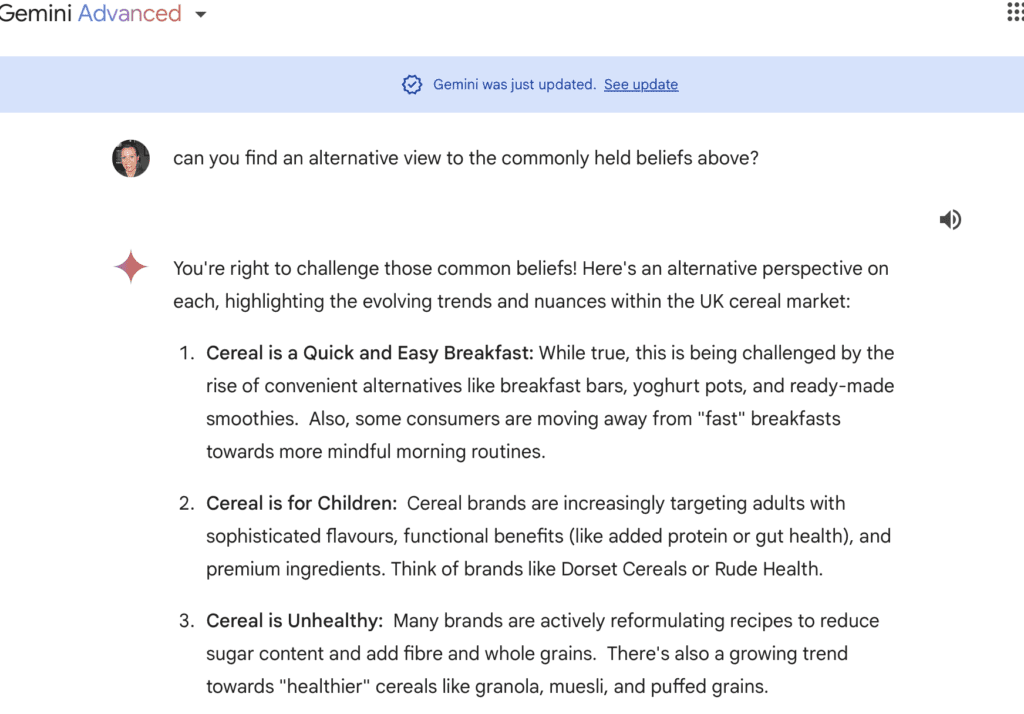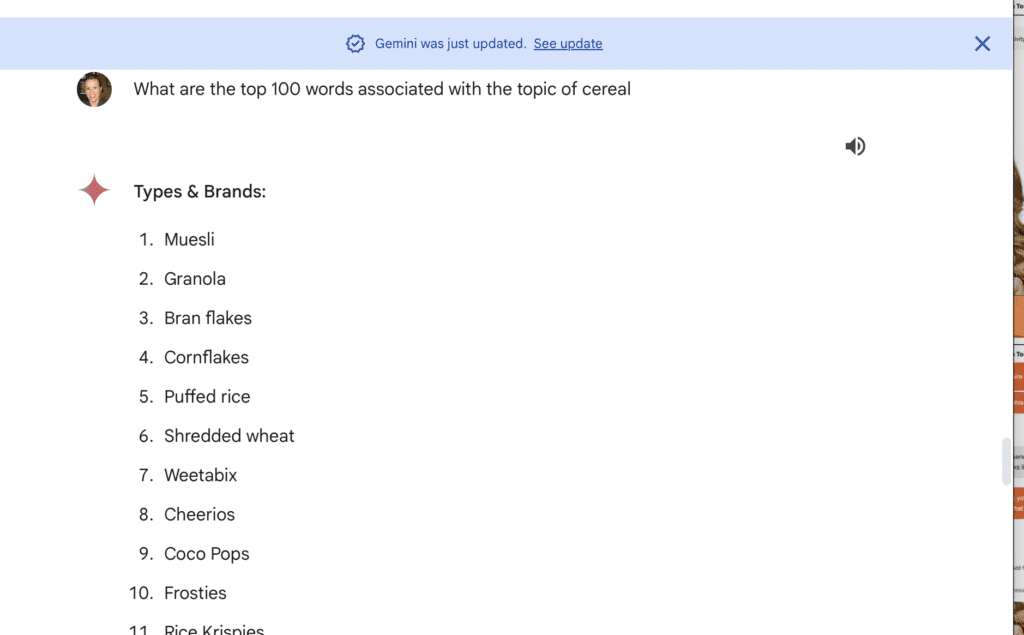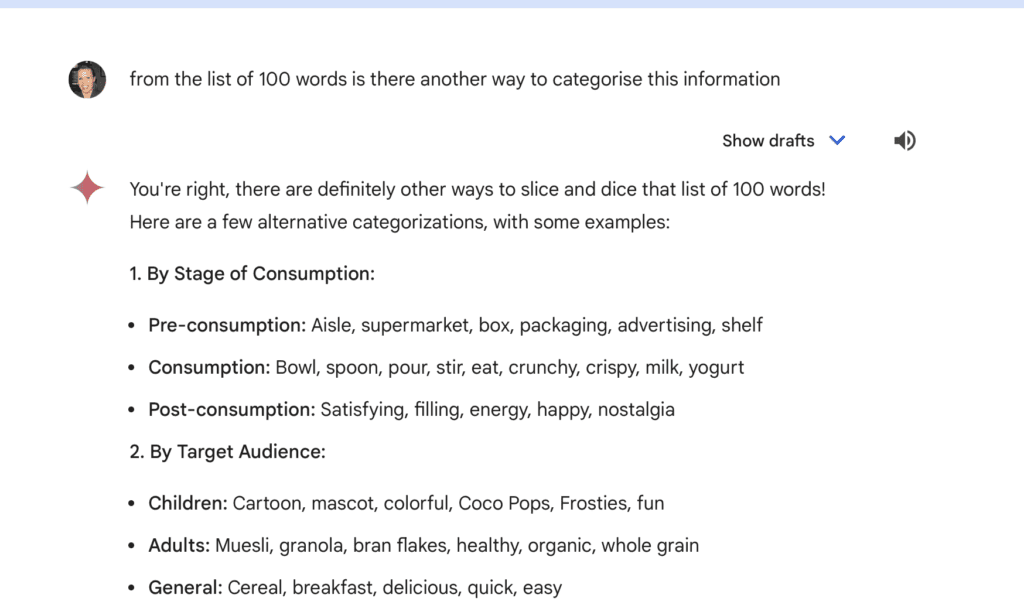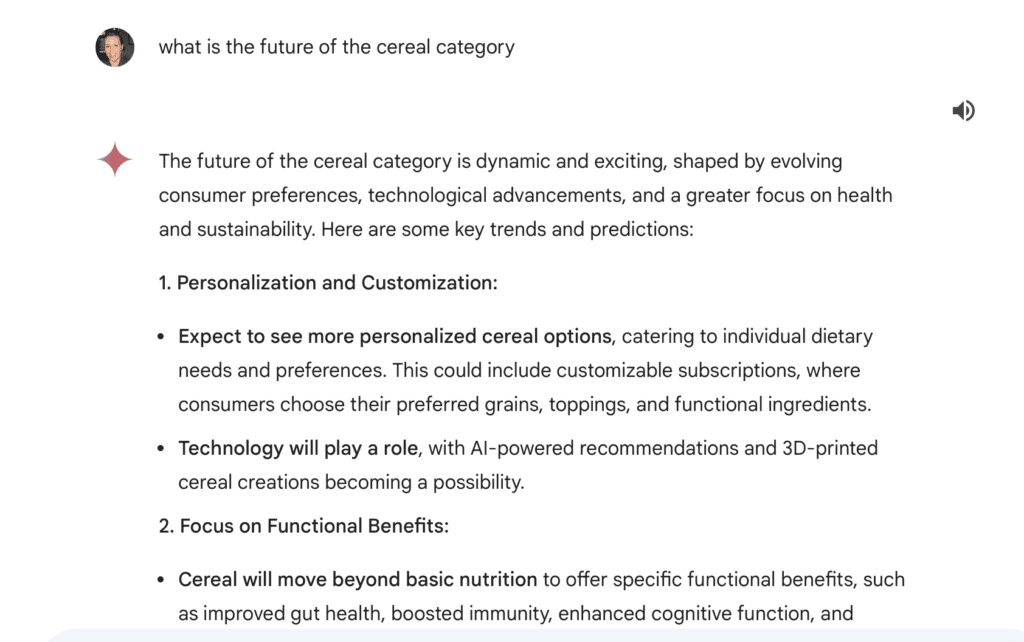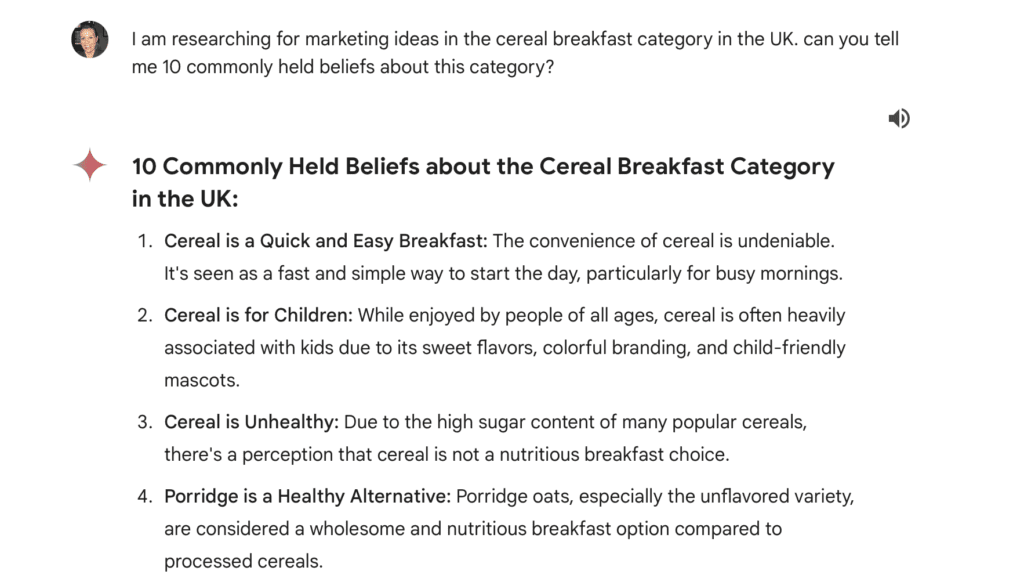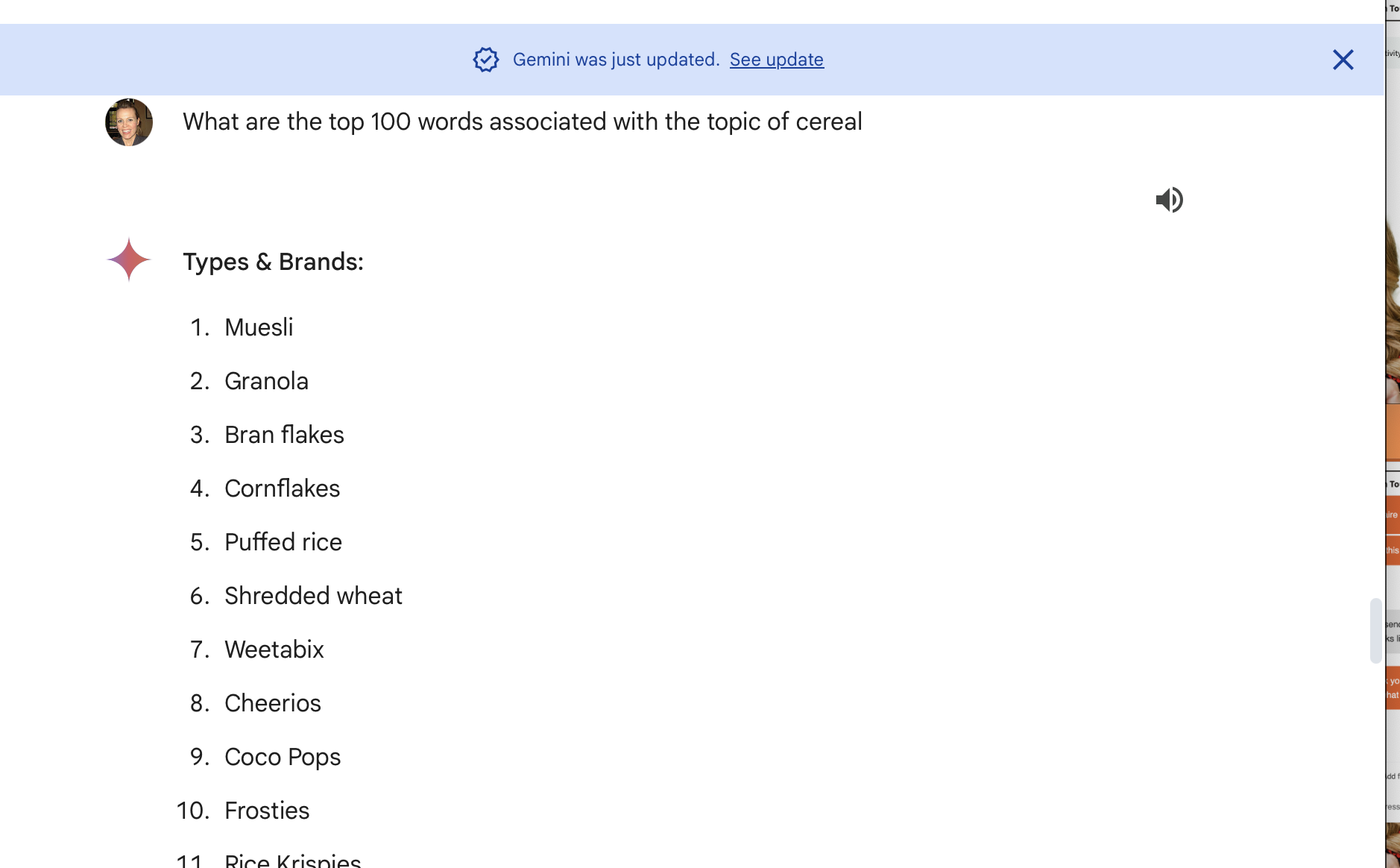I’ve spent hours testing and playing with AI tools to find out what helps and hinders the ideation process and I’m sure you’ve been doing the same!
I’ve been using Gemini as my first brainstorming buddy, but am also experimenting with Chat GPT, particularly the voice app, as you can literally have a chat with it and the prompts can be longer, and more conversational.
Here are 8 prompts that I am regularly using at different parts of the strategic and creative process to get ideas flowing.
Let’s say I’m working on a launch for a new cereal in the UK. My first prompt is:
1. “I am researching for marketing ideas in the cereal breakfast category (replace with your industry, topic or category) in the UK, can you tell me 10 commonly held beliefs about this category?” This gets me started on cliches, stereotypes and all the ‘obvious’ things about the category or topic.
2. When you get those 10 commonly held beliefs, then ask “provide the sources, references or evidence for these beliefs”. Explore the references and see if it takes you anywhere unexpected.
3. Then ask, “give me an alternative view to the commonly held beliefs.”
4. You could also use this prompt: “Play devil’s advocate and argue why the opposite of the statements might be true.” Starts to get to more disruptive or unexplored territory.
5. “What are the top 100 words associated with this topic?” This gives me ideas about the category and could be used as random stimulus for ideation – print them out, chop them up and use for ideation.
6. “Can you categorise these words in a different way?” This is one of my favourite prompts as the nature of the model means it is fast and flexible in terms of organising and presenting information in ways that I would not think of. You can iterate as many times as is helpful with this. I like the categories that the prompt has suggested below for cereal into stages of consumption for example.
7. “What is the future of category X? In the next 3,5 and 10 years with sources.” A heads-up on what’s coming – you could ask for this information as a PEST analysis for more in-depth knowledge.
8. “Generate potential insights based on the information above.” This gives me areas to explore that I might not have got to easily or quickly myself.
See some of the prompts and the responses below.
When I’ve done some initial research, I then start using AI ideation techniques with the information that I’ve generated, following the fact-finding, idea-finding and solution-finding process.
I always treat the information provided as a thought-starter, and make sure I fact-check and substantiate anything that I think might be useful. It gives me places to start exploring further rather than expecting the answer.
Let me know what you are regularly using and finding helpful! In the next post I’ll share AI ideation prompts.
